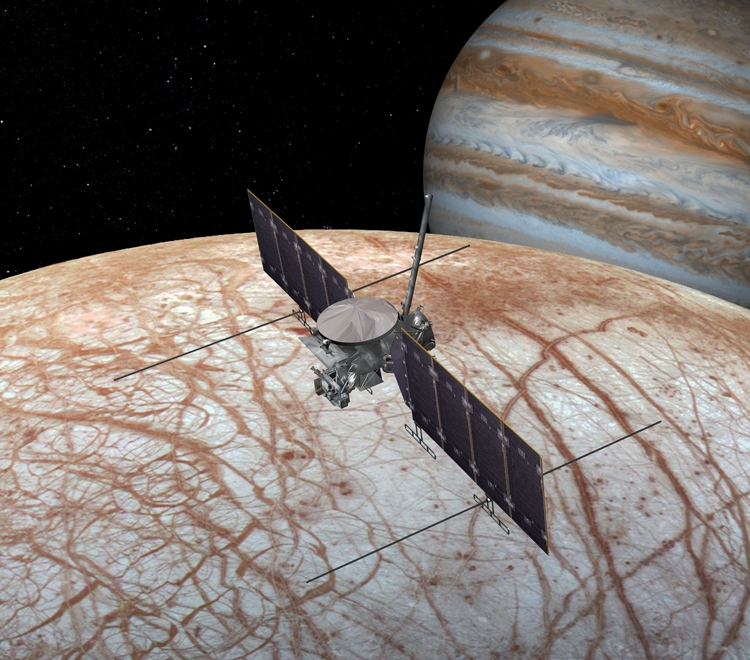
Not so long ago, it was believed that most planets in the solar system, except Earth, are dry and lifeless, rocky worlds. After a man began to actively explore his star and the neighboring planets, it turned out that this was not at all the case. The presence of water on the planets and planetoids in one form or another is the rule rather than the exception.
Some objects in the solar system do not just have water, there are whole oceans. Well, since there is H
2 O, then life can be present, some kind of one. Unfortunately, it is almost or completely impossible to confirm or deny this as long as the expedition does not go to a potentially inhabited planet / planetoid. It does not matter whether it is a robot or a brave astronauts - the main thing that will be able to answer the eternal question
is there life on Mars? - whether a person has a chance to meet
extraterrestrial life .
The most promising planetoids in terms of the possibility of finding life there are Enceladus and Europe. Getting to the latter is somewhat easier, and it has been studied a little better, so most of the planned expeditions point it out as the end point of the journey. Europe is located 600 million kilometers from Earth.
Outside, the satellite of Jupiter is covered with ice shell several kilometers thick. But under the ice, most likely, a relatively warm ocean is splashing. Water is heated for a number of reasons, one of which is the tidal forces of Jupiter, which deform Europe and cause its heating. Scientists believe that Europe consists of silicate rocks with an iron core in the center.
Considering all the factors discussed above, NASA decided to send an automated research station to Europe, in order to get more information about this world. The name of the station is already known - this is
Europa Clipper . The launch of the apparatus to the planetoid is scheduled for the 20s, so there is not much to wait for.
One of the important issues that are related to the mission - how to put the device into space? In principle, this can be done with the help of a NASA rocket that is currently being prepared, which is called
SLS . But before the readiness of this system is still far away, even approximately it cannot be said when it will fly into space. In addition to the Space Launch System, there are other missiles that are capable of performing the task of sending the Clipper to Jupiter.
You also need to take into account the mass features of the trajectory of the movement of the apparatus to Europe. Such a mission requires careful preparation for many years. The project will cost billions of dollars, so NASA will have to ask permission from the US Congress to allocate the appropriate funds. Fortunately, there is a congressman, John Calberson (John Culberson) who fully supports the "European mission". He is lobbying interesting by NASA, allowing the agency to receive large funds for project execution. Thanks to him, NASA this year received about $ 2 billion of funding, of which $ 495 million is allocated for the development of a mission to Europe.
The same Kalberson believes that so far no rocket is able to cope with the task of putting a six-ton satellite into space, giving it the necessary acceleration to achieve its final goal. True, the congressman and his assistants did not take into account the possibility of using the Centaur stage for the Falcon Heavy of the company SpaceX. It may well be that you can do without SLS, and use existing solutions.
The congressman still advocates the use of SLS, in particular, the first version of the super-heavy rocket, called
Block 1 . It is capable of launching a cargo of about 70 tons into Earth orbit, as well as accelerating the Clipper, which allows it to reach Europe in about three years.
The device itself can be manufactured in about four years, thanks to generous financing - of course, provided that the cash flow does not run low. In projects of this type, the most money is spent on design and development. It turns out that Clipper will be ready for work by about 2022. And if the Falcon Heavy cannot take the vehicle out of the atmosphere of the Earth, then you need to be sure that by the time the station is ready, the SLS rocket will be ready.
In general, all the prerequisites for the successful implementation of the project are available, so I would like to hope that nothing hurts NASA's plans. By the way, organic matter in the emissions of water vapor in Europe and Enceladus
will be able to study the telescope "James Webb". But, of course, only when he himself gets out of the Earth. And with this
is a problem .